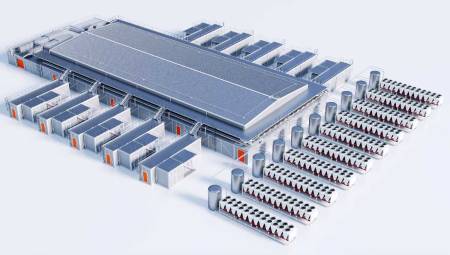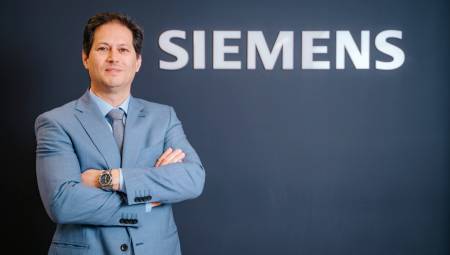 The objective of this article is to highlight the importance of good sound in our environment, focused in this case on the Segment of traditional Churches.
The objective of this article is to highlight the importance of good sound in our environment, focused in this case on the Segment of traditional Churches.
Felipe Vargas*
For more than 20 years, I have dedicated myself to touring most Latin American countries, I have even lived in 6 of them, and my conclusion for all countries is the same, regarding the segment of the Traditional Churches:
"In each and every one of them, we have thousands of Traditional Churches, of different sizes and different acoustic characteristics, the vast majority with a common denominator: poor sound quality; this is directly influenced by the acoustic conditions of each of the Churches, but mainly because it is the result of a bad sound system".
It is also important to note that there are few audio professionals who are involved in this segment, leaving the door open for less prepared people to be the ones who perform in many cases this type of installation.
That is why in many of the Traditional Churches the main result of all this is a bad Communication from the Sender to the Receiver, remember what we learned in the College: when we have a Message, a Sender and a Receiver; and well the Channel for Effective Communication in Traditional Churches is the Audio System.
The audio system
1. It is the main working tool in a Church
2. It should not interfere with the celebration
3. You should not alter the aesthetics of the temple
The audio system is the main Channel or Means of Communication that the Traditional Churches have to bring their Message to their audience: their Receivers.
Let's highlight some important concepts, which in many cases we take for granted, but we forget that most of us do not consider it an important segment, because other concepts are put a little vague and out of technical context at the level of professional audio, such as:
"Churches do not invest, they have no money, they are not good customers, etc..."
1. The Audio System is the main working tool in a Church. For example, in a Church with 500 people, the celebrant cannot be heard by everyone present without a sound system or at least a megaphone, so he will NOT be able to do his job without this tool.
2. The Audio System must NOT interfere with the celebration. That is, the audio system must go unnoticed, not generating undesirable strange noises, doing its job well so that what is said is understood, because when it is not understood, it is altering the Message that the Sender wishes to send to its Receiving audience.
3. The Audio system must NOT alter the aesthetics of the enclosure where it is being used. On many occasions, boxes and bulky solutions are placed without the result in the resulting sound quality being appropriate and also completely altering the aesthetics of the enclosure.
Audio System Objectives
1. That all attendees can listen: Coverage
2. Sound loud enough: Sound pressure
3. That the message is perfectly understood:Intelligibility
It is always important to consider a series of objectives when implementing any type of audio system; to generate a series of predetermined expectations in the client, and thus use them as measurement points; within the parameters that we have proposed to the user.
1. Coverage, that is, that all attendees can listen. In addition to making sure that all audience areas are covered directly by the sound system, in many of the Churches there are areas where it does not make sense that there is direct coverage; this should be discussed carefully with the user.
2. Sound Pressure, that is, that it is heard loud enough. In most of the Traditional Churches, activities are carried out daily with few attendees, less than 100 people, but activities are also carried out on weekends with more than 500 people, and also activities on special dates where the capacity of the enclosures is overestimated, making this an important challenge for the audio system, as it must be able to provide an appropriate sound pressure level in the various types of activities; since if it is not able to offer an adequate sound pressure level in weekend activities for example, it is not then the appropriate system for this venue.
3. Intelligibility, that is, that the message is perfectly understood. On many occasions we achieved good coverage and good sound pressure, but not good intelligibility; therefore, the implemented system is not appropriate for that specific enclosure. It is here where most of the sound systems installed in the Traditional Churches fail, since we face the Acoustics of the Enclosure, and against this there is nothing we can do, we can try to reduce a little the acoustic effects of an enclosure, but in most cases it can only be achieved with a good acoustic treatment.
The audio system is not a 'cost'!
1. It is an investment in the long term.
2. Older people will appreciate it.
3. Most churches buy at least three audio systems before getting one that meets their needs.
4. As important is the quality of the installation and materials as that of the audio system and its components.
In the Traditional Churches it is said that a good system is very expensive; but if we analyze where the true cost is, it is really in a bad sound system; since constant investments and repairs are made to try to improve a bad system, raising the cost of it over the years, without improving the result, thus making the complaints of the public constant and increasingly annoying.
That is why among the main tasks we have is to make this segment see why the Audio System is not a cost:
1. It is an investment in the long term. It is really cheaper a good system that lasts 15 years to one of poor quality that lasts 3 or 4 years; and it is also for the benefit of the community, who are the ones who really contribute the money to cover this investment.
2. Older people will appreciate it. It is usually the older people who have the most assistance in the Traditional Churches, they are also the ones who in many cases make the most economic contributions; at the same time they are the people with the greatest hearing problems; so a good audio system will be pleasantly appreciated by them, and they will be the first to make it known and contribute with the payment of it.
3. Most churches buy at least three audio systems before getting one that meets their needs. It is very common to see how in multiple traditional churches the purchase of audio systems is almost a sport, making purchases and constant changes; without being able to obtain a real solution.
4. As important is the quality of the installation and materials as that of the audio system and its components. This is a common mistake made by many installers or system integrators, and not only in installations in Traditional Churches, since many use high quality systems and equipment, of recognized brands, but then the cables and connectors are of a totally inferior quality, they do not worry about the appropriate power supply, and the installation is carried out without following the basic and minimum criteria of a quality installation, and also that it is safe.
Rudimentary installations
It is very common to find ourselves in traditional churches with rudimentary facilities; I am sure that more than one of you will have seen cases similar to these, which is not the case to say your name:
Photo 1: For example, in this Church conventional speakers were used, in a handmade support, without any vertical inclination or horizontal rotation, that is, the sound is reflected directly in the front column.
Photo 2: In this Church, there were more than 8 small horns for an enclosure 20 meters long, in a series-parallel combination, to cover a distance greater than 10 meters; clearly this typical or traditional installation is not a solution for this type of application, because when the enclosure was at its maximum capacity, the system could not develop the required sound pressure level.
Photo 3: Here we see how an arrangement of linear speakers was used, as if they were an arrangement of conventional speakers. Although it was a possible electro-acoustic solution, it is certainly not very aesthetic that we say.
Photo 4: We also constantly find cases like these, where no technical aspect is followed to carry out the wiring, nor the slightest anti-fire care.
Photo 5: In many cases, even if quality equipment is used, of recognized brands, etc., it is not installed properly in metal racks (cabinets), with the appropriate electrical conditioning and ventilation for the system.
Professional facilities
In Professional Installations, the quality is noticeable just by seeing the rack of equipment and the installation of the same.
Photo 6: The difference is substantial, the implementation is professional, it is clean, all cables ordered and organized by type and categories, each properly identified.
Photo 7: In addition, the main thing is that metal cabinets are incorporated for installation, with locked doors, with blind lids for spaces without equipment, and thus achieve the behavior of the rack like a chimney, taking the fresh air from below and extracting the hot air from above with fans.
Systems that go unnoticed
As part of the Professional Installations, there is that the systems go unnoticed, that is, that both at the electro-acoustic level and at the aesthetic level, the speaker systems are well installed, that the cables are not seen, and that they match the architectural design of the place.
In other words, that the conventional user has a hard time finding the speakers.
The importance of professional design
Designing an audio system is a custom process; since no two Churches are the same!!! Even if they are two churches built with the same planes, there are several aspects such as temperature, humidity, atmospheric pressure and others that directly affect the acoustic behavior of an enclosure.
Today the design of an audio system in a Traditional Church is not justified, without the use of an electro-acoustic design program in a computer.
The main advantage of the design is that it allows you to evaluate the system and know in advance how it will perform, even before installing it.
In case the plans of the enclosure do not exist, the corresponding survey must be carried out to achieve the model of the enclosure in the program; and they must be included from the materials with which the Temple is built.
In summary, and broadly speaking, I wanted to highlight the important aspects to consider in the implementation of audio systems in order to achieve true effective communication in traditional churches.
Within my daily functions at Crestron Latin America, as a Consultant, we face daily situations very similar to those I describe in the previous paragraphs, and that is why I gave myself the task of sharing this type of concepts with all of you.
*Felipe Vargas is founder of AV Consulting Group and audiovisual consultant for Crestron Latin America. You can contact him through the mail [email protected]















